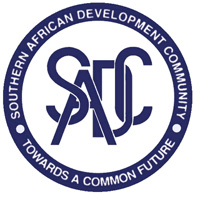Can the SADC Free Trade Area create Growth, Development and Wealth?

 |
| SADC Logo |
The main aim of a free trade area (FTA) is to allow goods and services produced within the designated area to flow freely across political borders without artificial constraints and hold-ups. Many large multilateral organisations such as the World Bank and the International Monetary Fund (IMF) have regularly promulgated advice based on the belief that freer trade generates predictable and positive consequences for economic growth and poverty alleviation. This premise is based on the theory of comparative advantage, the basic principle of which is that member countries are able to specialise in goods and services that they can produce relatively more efficiently than their trading partners and hence reap the benefits of mutual exchange. In other words, trade is a positive sum activity; both trading partners gain, and the pursuit of the gain provides the motivation for exchange. The historic signing of the free trade agreement between the SADC member countries moves the region further up the economic integration ladder.
Various forms of economic integration follow on from an FTA. It is envisaged that the SADC FTA is the precursor to a customs union which is planned by 2010, a common market by 2015, a monetary union by 2016 and a single currency by 2018. The commitment by each of the individual countries in the region to this path of economic integration shows willingness to change their economic policies and should be applauded. However, it is important to note that although trade liberalisation is a necessary condition for growth it is not necessarily sufficient. There are complementary conditions, such as macroeconomic stability, credibility of policy, enforcement of contracts and the respect of private property rights, without which the benefits of openness may fail to materialise. Southern African governments have it directly within their power to reform their economies and adopt policies that will increase growth and reduce poverty.
It must be borne in mind that regional trade agreements can be stumbling blocks to eventual multilateralism. Multilateralism manifests itself in the Most Favoured Nation (MFN) principle, meaning that the best terms offered to any one trading partner have to be offered to all. Because of a number of loopholes in the system many countries are bypassing the multilateral mechanism altogether, opting to enter into economically less efficient regional trade agreements. One might ask: If free trade is economically the most efficient policy, how can such a move towards free trade result in reduced economic efficiency?
Not all increases in trade flows within a regional free trade area can be counted as gains. For instance, the regional trade agreement could result in trade diversion – where members of the preferential trading agreement buy goods from higher cost sources within the FTA, as opposed to more efficient producers outside the agreement. Furthermore, the need to observe rules of origin to prevent re-exportation of goods results in a complex web of additional costs. Rules of origin arise because members of the FTA do not have the same policies with respect to non-members. Free trade areas require a substantial proportion of the components of a good to originate in the exporting member country and goods that do not meet the minimum requirement are not entitled to the benefits of the FTA.
However, carefully considered agreements do create new opportunities for gains from trade. FTA’s create trade that would not otherwise have existed. One potential gain from tariff reductions between trading partners is that more efficient producers in partner countries replace inefficient local producers. In most cases trade creation raises a country's national welfare. The most effective way, though, to ensure that trade liberalisation leads to efficiency improvements is if a country removes its trade barriers against all countries.
So can the SADC free trade area live up to its central theme and create growth, development and wealth? It remains to be seen whether the trade creating gains outweigh the trade diverting losses in the newly created regional protectionism. What most of the SADC member states sorely lack are the basic institutions of economic freedom, which include its fundamental foundations: personal choice, voluntary exchange, freedom to compete and security of privately owned property. Economic freedom is strongly related to prosperity and growth. Countries that are economically freer tend to grow faster and be more prosperous. Without increases in these fundamental freedoms it is difficult to envisage how African states will grow and become more prosperous.
